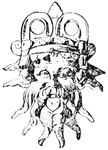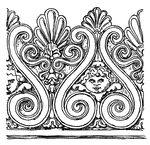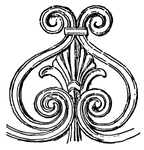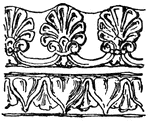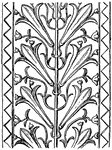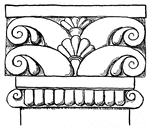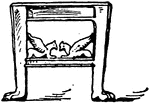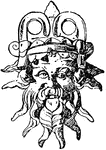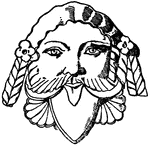Search for "etruscan"
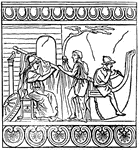
Antefixa
"Antefixa representing Minerva superintending the construction of the Ship Argo. Antefixa are terra-cottas,…
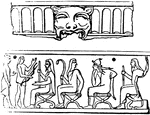
Antefixa
"The two imperfect antefixa, are amoung those found at Velletri, and described by Carloni. Antefixa…
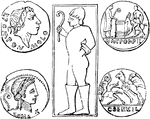
Sculpture and coins
"The figure in the middle of the following illustration is from a most ancient specimen of Etruscan…

Lituus
"Probably an Etruscan word signifying crooked. 1. The crooked staff borne by the augurs, with which…

Ocrea
"A greave, a leggin. A pair of greaves was one of the six articles of armour which formed the complete…

Ocrea
"A greave, a leggin. A pair of greaves was one of the six articles of armour which formed the complete…

Etruscan relief
"The earliest Etruscan works of sculpture which have come down to us are the stone reliefs of tombstones,…

Temple of Vesta, Tivoli
The circular so-called "Temple of Vesta" at Tivoli, of the early first century BCE, has been widely…
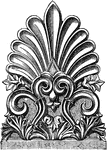
Ante-fixae
Ante-fixae, the vertical blocks which terminate the covering tiles of the roof of a Roman, Etruscan,…
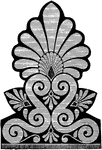
Ante-fixae
Ante-fixae (from Latin antefigere, to fasten before), the vertical blocks which terminate the covering…
Etruscan Earring
The Etruscan earring is light in weight, usually made out of precious metals, in sheet or wire filigree.
Etruscan Earring
The Etruscan earring is usually light in weight, usually made out of precious metals, in sheet or wire…
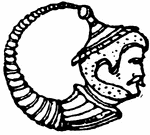
Etruscan Earring
The Etruscan earring is light in weight, usually made out of precious metals, in sheet or wire filigree.
Etruscan Earring
The Etruscan earring is light in weight, usually made out of precious metals, in sheet or wire filigree.
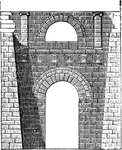
Etruscan Arch at Perugia
In these Etruscan buildings traces are to be found of the arch; as, for instance, in the Gate of Volterra…
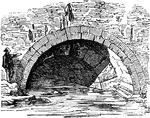
The Cloaca Maxima at Rome
In these Etruscan buildings traces are to be found of the arch; as, for instance, in the Gate of Volterra…
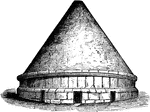
Tumuli
The most interesting monuments of Etruscan architecture which have been preserved are the tombs. They…
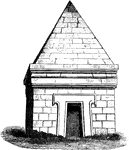
Etruscan Tomb at Castel d'Asso
The most interesting monuments of Etruscan architecture which have been preserved are the tombs. They…
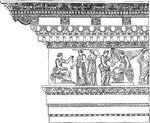
Corinthian Entablature from the Nerva at Rome
Simple styles, such as the Doric, which accorded so intimately with the whole disposition of the Grecian…
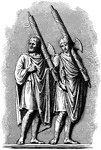
Roman Civil Servants
An illustration of two lictors, members of a special class of Roman civil servants. Lictors had special…

Etruscan Jug
This jug has a handle which is sculpted higher than the jug itself. A woman's face is seen near the…

Etruscan Vase
This Etruscan vase is an imitation. This vase is of considerable height and is 4 feet tall.
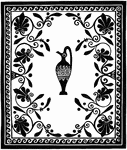
Album Cover
This album cover is a royal quarto (bookbinding technique). It is colored in brown and inlaid in black.…


